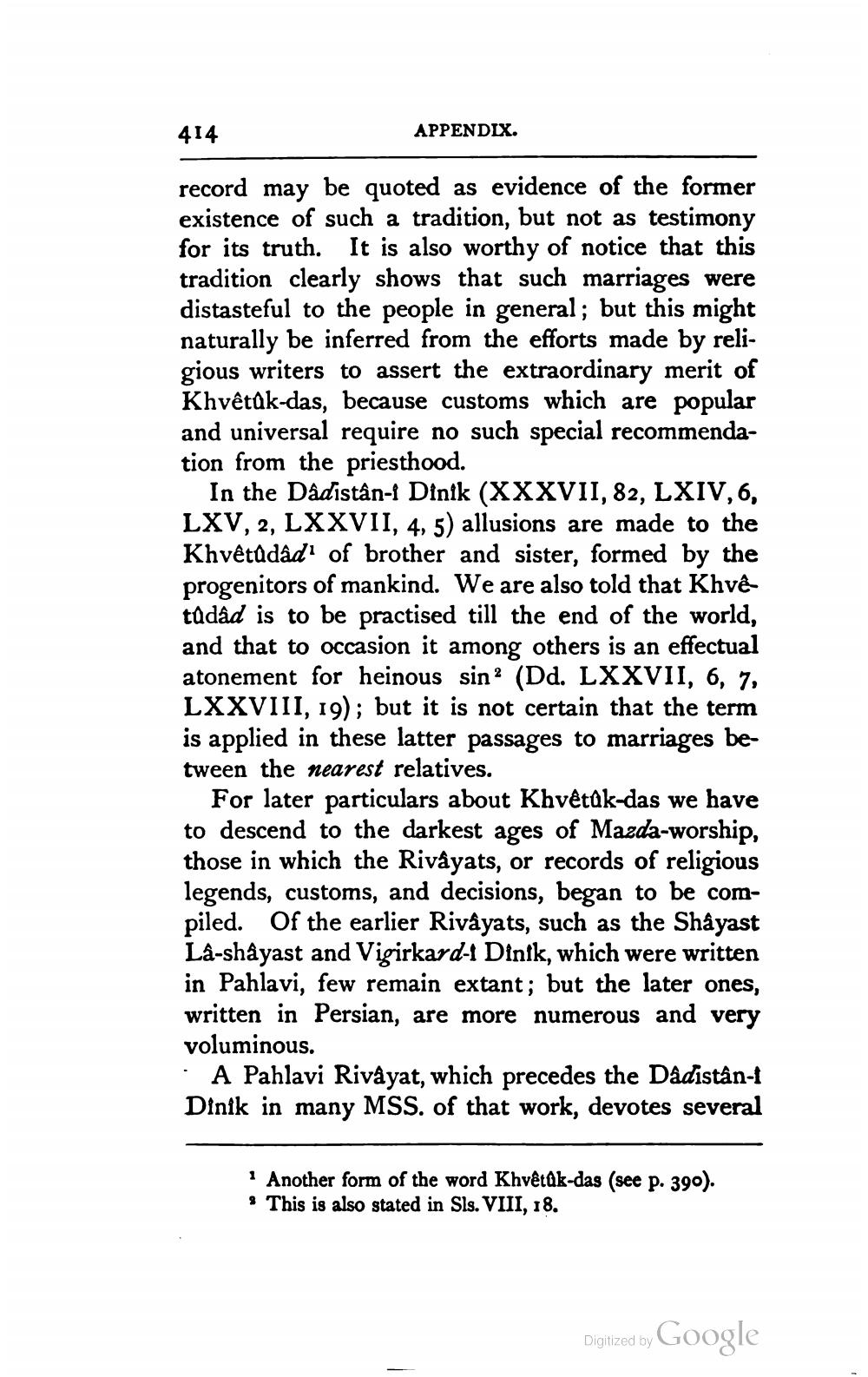________________
414
APPENDLX.
record may be quoted as evidence of the former existence of such a tradition, but not as testimony for its truth. It is also worthy of notice that this tradition clearly shows that such marriages were distasteful to the people in general; but this might naturally be inferred from the efforts made by religious writers to assert the extraordinary merit of Khvêtāk-das, because customs which are popular and universal require no such special recommendation from the priesthood.
In the Dâdistân-i Dinik (XXXVII, 82, LXIV, 6, LXV, 2, LXXVII, 4, 5) allusions are made to the Khvêtādad" of brother and sister, formed by the progenitors of mankind. We are also told that Khvê tadad is to be practised till the end of the world, and that to occasion it among others is an effectual atonement for heinous sin? (Dd. LXXVII, 6, 7, LXXVIII, 19); but it is not certain that the term is applied in these latter passages to marriages between the nearest relatives.
For later particulars about Khvêtûk-das we have to descend to the darkest ages of Mazda-worship, those in which the Rivayats, or records of religious legends, customs, and decisions, began to be compiled. Of the earlier Rivayats, such as the Shayast Là-shayast and Vigirkard-1 Dink, which were written in Pahlavi, few remain extant; but the later ones, written in Persian, are more numerous and very voluminous. · A Pahlavi Rivậyat, which precedes the Dadistân-t Dinik in many MSS. of that work, devotes several
* Another form of the word Khvêtêk-das (see p. 390). . This is also stated in Sls. VIII, 18.
Digitized by Google




